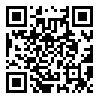目的 基于美国食品药品监督管理局不良事件报告系统(FAERS)数据库挖掘与分析Janus激酶(JAK)抑制剂相关皮肤癌信号。方法 检索FAERS数据库2011年第4季度至2023年第4季度的JAK抑制剂(芦可替尼、托法替布、巴瑞替尼、乌帕替尼、阿布昔替尼)相关皮肤癌报告。采用《国际医学用语词典》26.1版的首选术语对不良事件进行标准化,并采用《标准国际医学用语词典分析查询》26.1版查询皮肤癌相关首选术语。采用报告比值比(ROR)法对JAK抑制剂相关皮肤癌风险信号进行检测。采用Weibull分布分析JAK抑制剂相关皮肤癌发病时间。 结果 共检索到JAK抑制剂相关皮肤癌患者1 053例。芦可替尼涉及复发性皮肤鳞状细胞癌、皮肤转移癌等12种首选术语;托法替布涉及皮肤神经内分泌癌、外阴癌等5种首选术语;巴瑞替尼涉及皮肤恶性黑素瘤;乌帕替尼涉及皮肤鳞状细胞癌、原位恶性黑素瘤等9种首选术语;阿布昔替尼涉及皮肤T细胞淋巴瘤、皮肤鳞状细胞癌。与女性患者相比,男性患者使用JAK抑制剂发生皮肤癌的潜在风险更高(ROR=1.83,95% CI:1.56,2.15);与年龄20~59岁患者相比,年龄≥60岁患者使用JAK抑制剂发生皮肤癌的潜在风险更高(ROR=2.50,95% CI:2.06,3.04)。芦可替尼、托法替布和巴瑞替尼诱导皮肤癌的中位发病时间分别为699 d、625 d和338 d,Weibull分布提示这3种JAK抑制剂诱导皮肤癌的发病时间均属于磨损故障型。 结论 5种JAK抑制剂与皮肤癌的发生风险有关,临床上长期使用JAK抑制剂时,需警惕皮肤癌的发生。
广西医学 页码:263-268
作者机构:谭皓文,本科,副主任药师,研究方向为临床药学与药物警戒研究。
基金信息:广西壮族自治区卫生健康委西医类自筹经费科研课题(Z⁃D20231663);梧州医学高等专科学校2023年度校级科研项目(23WYKY08)
- 中文简介
- 英文简介
- 参考文献
Objective To perform the signal mining and analysis of skin cancer associated with Janus kinase (JAK) inhibitors based on the United States Food and Drug Administration Adverse Event Reporting System (FAERS) database. Methods JAK inhibitors (ruxolitinib, tofacitinib, baritinib, upadacitinib, abxicitinib) related skin cancer reported from the fourth quarter of 2011 to the fourth quarter of 2023 were retrieved from the FAERS database. Adverse events were standardized with the use of preferred terms from the Medical Dictionary for Regulatory Activities, version 26.1. The reported odds ratio (ROR) method was adopted to detect JAK inhibitors related skin cancer risk signals. The Weibull distribution was employed to analyze the onset time of JAK inhibitors related skin cancer. Results A total of 1053 patients with JAK inhibitors related skin cancer were retrieved. Ruxolitinib involved 12 preferred terms such as recurrent cutaneous squamous cell carcinoma and cutaneous metastasis. Tofacitinib involved 5 preferred terms such as cutaneous neuroendocrine carcinoma and vulvar cancer. Baritinib had been implicated in cutaneous malignant melanoma. Upadacitinib involved 9 preferred terms such as cutaneous squamous cell carcinoma and malignant melanoma in situ. Abxitinib had been implicated in cutaneous T⁃cell lymphoma and cutaneous squamous cell carcinoma. Compared with females, males had a higher potential risk of suffering from skin cancer by using JAK inhibitos (ROR=1.83, 95% CI: 1.56, 2.15). Compared with patients aged 20-59 years, patients aged ≥60 years had a higher potential occurrence risk of skin cancer when using JAK inhibitors (ROR=2.50, 95% CI: 2.06, 3.04). The median onset time of skin cancer induced by ruxolitinib, tofacitinib, and baritinib was 699 days, 625 days, and 338 days, respectively. The Weibull distribution suggested that the onset time of skin cancer induced by these three JAK inhibitors belonged to wear failure type. Conclusion Five categories of JAK inhibitors are associated with the occurrence risk of skin cancer. It is necessary to be alert to the occurrence of skin cancer when JAK inhibitors are used for a long time in clinical practice.
-
无




 注册
注册 忘记密码
忘记密码 忘记用户名
忘记用户名 专家账号密码找回
专家账号密码找回 下载
下载 收藏
收藏
